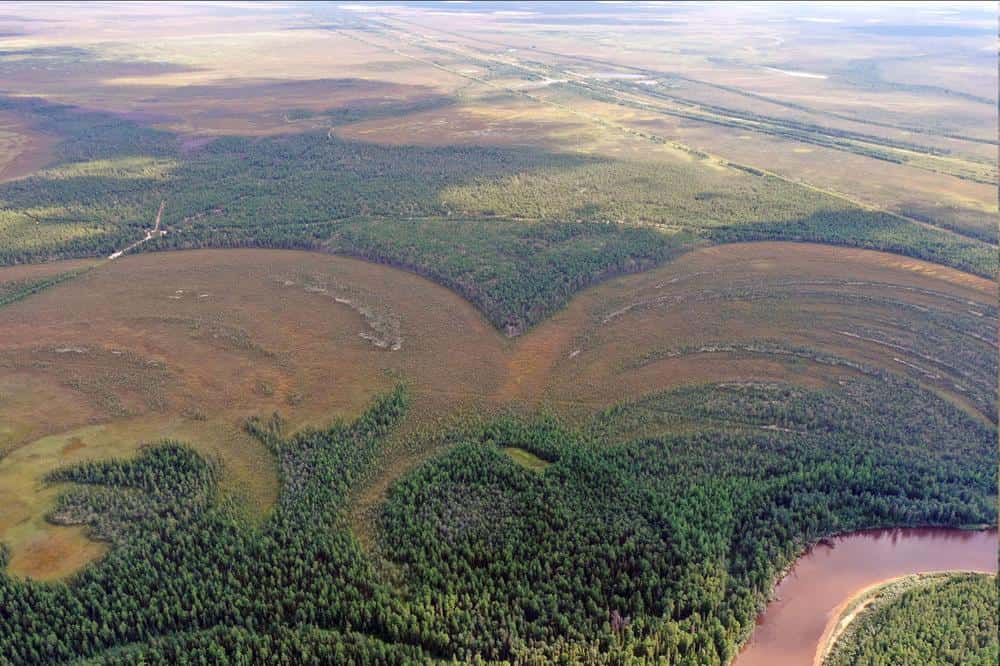In a remote corner of Siberia, near the Amnya River, the discovery of ancient fortifications is rewriting the narrative of human societal development. Archaeologists have unearthed evidence of complex defenses built by hunter-gatherers over 8,000 years ago. This finding, led by an international team from Freie Universität Berlin, challenges long-held assumptions about the evolution of complex societies.

In recent years, archaeologists have documented an impressive group of ancient fortified settlements in central Siberia. Siberia lies some 2500 km east of Moscow, and it’s not the easiest place to live in. Nevertheless, it seems that some 8,200 years ago, this area became very desirable to some cultures.
The recently discovered fortress, the oldest known to date, accommodated dozens of people in nearly meter-deep dwellings. Living underground helped people from this civilization to protect themselves from the cold. The fortress was surrounded by earthen walls several meters high, topped with wooden palisades.
At some point, the fortress was burned down — probably because of a violent battle. But to researchers, something else stands out.
The people who made this fortress were hunter-gatherers, which was previously thought to be impossible.
Fortresses and agriculture
The implications of these fortresses extend beyond their physical structures, challenging existing theories in anthropology and archaeology.
For decades, the prevailing theory in anthropology and archaeology posited that the formation of complex societies was primarily driven by the advent of agriculture. This shift from nomadic lifestyles to settled farming communities was thought to enable the development of social hierarchies, permanent settlements, and monumental architecture. However, the recent discoveries in Siberia suggest a different narrative: complex societal structures could emerge even in hunter-gatherer communities, independent of agricultural practices.
The fortifications, located in central Siberia, offer a window into the life of ancient hunter-gatherers who thrived despite the region’s harsh winters. Contrary to the image of struggling nomads, these people enjoyed a more comfortable lifestyle, supported by the abundant resources of their environment. They had access to plentiful food sources, including fish like pike and salmonids, which played a crucial role in their diet and survival. This abundance may have been a key factor in their ability to develop complex social structures without the need for agriculture.
The discovery of these ancient Siberian forts compels us to reconsider our understanding of how complex societies evolved. It suggests that the path to societal complexity is neither linear nor solely dependent on agriculture. Instead, it points to a more nuanced view of human history, where various factors, including environmental resources and social dynamics, play a role in the development of complex societal structures.
Not the only Stone Age fortress
If this were the only example of a pre-agriculture fortress, you could perhaps dismiss it as a bizarre outlier. But this is not the case.
Around ten pre-agricultural Stone Age fortified sites are known. Some 10,000 years ago, hunter-gatherer communities in coastal regions from the Korean peninsula to the Japanese archipelago and Scandinavia were using resources from the seas to support substantial settlements. There’s a broad spectrum of diversity on how ancient civilizations used fortresses, but a pattern is starting to emerge: that of pre-agricultural fortresses.
These findings from Siberia not only enrich our understanding of the past but also challenge us to think more broadly about the factors that drive societal evolution. As we continue to uncover more about our ancestors and their ways of life, we may find that the journey to complexity is far more diverse and intricate than previously thought.
Journal Reference: Piezonka, Henny, Natalya Chairkina, Ekaterina Dubovtseva, Lyubov Kosinskaya, John Meadows, and Tanja Schreiber. “The World’s Oldest-Known Promontory Fort: Amnya and the Acceleration of Hunter-Gatherer Diversity in Siberia 8000 Years Ago.” Antiquity 97, no. 396 (2023): 1381–401. Available at: https://doi.org/10.15184/aqy.2023.164.






